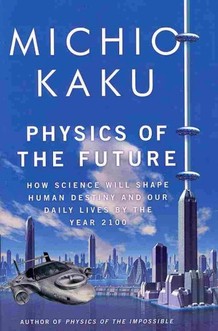See beyond!
-RSB

So if you were magically transported to a primitive society, would you be able to share our current technology and become a technological overlord??
I’ve thought about this question quite a bit actually, and I’m not sure I feel confident about being able to build much at all out of primitive materials…
The Plan: Thomas Thwaites set out on the mission of building his very own toaster from scratch. Yes, you heard that right, SCRATCH. Inspired by a Douglas Adams quote, “Left to his own devices he couldn’t build a toaster. He could just about make a sandwich and that was it”, Mr. Thwaites wanted to see if in fact it would be possible to make even the simplest of household appliances using raw materials. As you can see from the picture above, it’s a lot harder than it may seem!
Find out more here.
and check out his new book here.
-RSB

Internet Contact Lenses
Claim: Blink and you will go online, instantaneous language translation, cocktail party domination.
Feasibility: I think this one is definitely going to happen. They already successfully implanted a contact lens and a prototype for an augmented reality lens has been created as well – it has an LED, a small radio chip, and an antenna, and they’ve transmitted energy to the lens wirelessly, lighting the LED. They’ve even implanted these successful in rabbits. Look for this technology much sooner than 2100.
Augmented Reality with Brain Chips
Claim: This is basically like having an Avatar – we’ll be able to control a robot or other tools simply using our thoughts from a distance.
Feasibility: I’ve got to say this will also be happening in the near future. As Dr. Kaku pointed out in the interview, this research is going on at several neuroscience departments around the country with excellent results. Just check out this video if you’re skeptical. I would expect that you will see quadriplegics walking around with exoskeleton suits before too long, but at this point, we need more sophisticated algorithms and a deeper understanding of neural processes to get there.
Uploading Memory
Claim: This seems to be suggesting that we will have Matrix-like ability to upload new memories into our brain using tape recorded memories – i.e passively learning calculus, kung-fu, chess, etc…
Feasibility: I think this would probably be the most far-fetched idea presented in the interview. I don’t believe we will have decoded human memory to this level by the year 2100, but I hope to be proven wrong. Considering that we are learning more and more about the complexity of human memory storage, I think we will have to have mapped almost the entire human brain for this technology to take form.
He also discusses a bit about his educational training in physics and his string-field theory, which I find fascinating, but I’m certainly not qualified to discuss its feasibility.
And this is a great quote: “The mind of God is cosmic music resonating through 11-dimensional hyperspace.”
-RSB
Henry Molaison, known previously as “Patient HM,” had a memory that lasted only a few minutes as a result of brain surgery conducted in 1953 that was intended to stop his severe epilepsy. HM lived for 55 years after his surgery with severe anterograde memory loss. His working memory and procedural memory were in tact, but where he had trouble was in transferring short-term memories into long-term memories. He and his brain have been thoroughly studied by the scientific community for his condition.
This brain (pictured above) allowed scientists to locate where new memories are formed (the hippocampus), and also allowed scientists to understand that memory really comes in many different forms: learning, long-term, short-term, conscious, unconscious.
This image was shot by Spencer Lowell for a story, “The Art & Science of Slicing up a Human Brain”, featured in Discover magazine in 2010. The brain sits in a plexiglass mold waiting to be embedded in gelatin, frozen, sliced, dyed, mounted, and finally scanned.
-RSB
Photographer Cole Barash was recently hired to shoot an ad campaign for ALEX water bottles. The idea was to portray a futuristic lifestyle by showing an Astronaut in various activities in hopes of associating the water bottles with a progressive way of living.
buy metformin online noprescriptionrxbuyonline.com no prescription
I’m not sure if that comes across or not, but I’m a fan of the photography.
-RSB
Above is original photography scanned from ‘To The Moon’, an audio and visual chronology from Time-Life that documents NASA’s Mercury, Gemini, and Apollo projects. What I think is really amazing about these photos is how they highlight the analog nature of the space program in the 60’s. With no access to fancy computers or technology, they relied on elaborate test rigs and practical scientific testing to explore space. I often wonder how they could achieve so much with seemingly meager resources, and today, we are having trouble getting back to the Moon (and Mars seems farther away than ever) with all of our powerful computers and technology… I really hope to see a “To Mars” series sometime in my lifetime.
You can learn more about these pictures and others from this terrific post on Sci-Fi-O-Rama.
-RSB